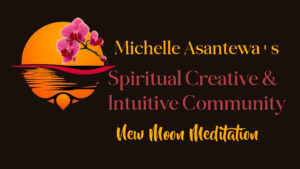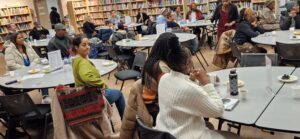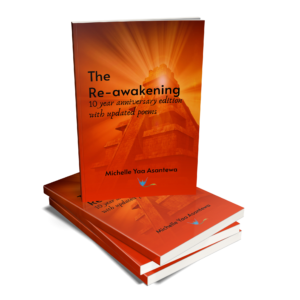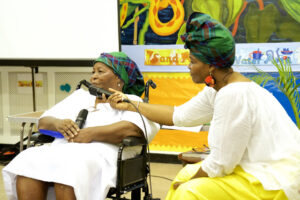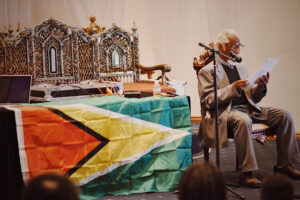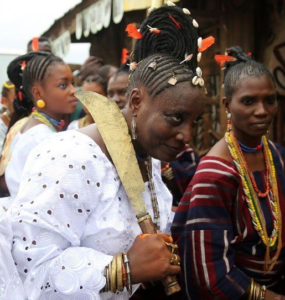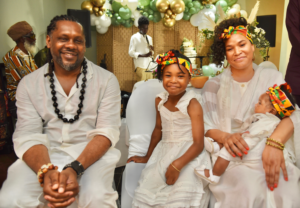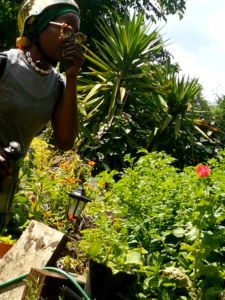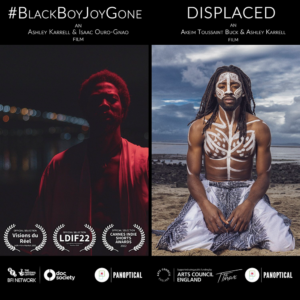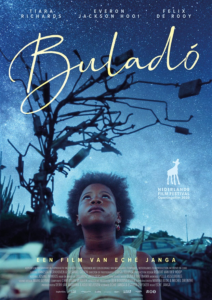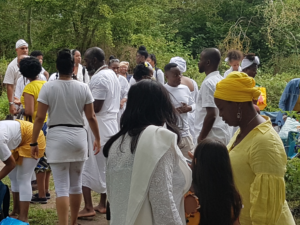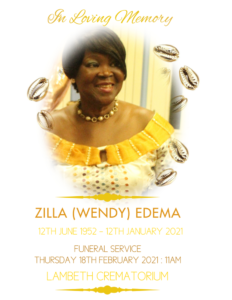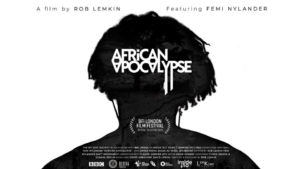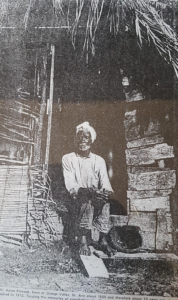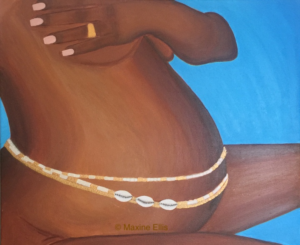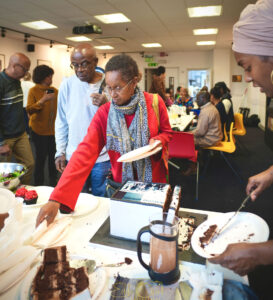
Disclaimer: Use of Copyrighted Images
The images used on this
blog and in our newsletters are sourced for educational purposes only.
These images are the property of their respective copyright holders and
are used under the principle of *fair use* to support commentary,
analysis, and discussion. We make no claim of ownership over any
copyrighted images and have taken all reasonable steps to attribute them
appropriately.
If you are the copyright owner of any image
featured here and believe it is being used improperly, please contact us
directly. We are committed to respecting intellectual property rights
and will take prompt action to resolve any concerns.
This content
is not intended for commercial use, and any reproduction or
distribution of the images without proper authorization may violate
copyright laws.
Osun in the British Museum’s Exhibition Feminine Power: the divine to the demonic
-
 By
Dr Michelle Yaa Asantewa
By
Dr Michelle Yaa Asantewa
- 8 minutes
- Article
Share
The last exhibition I visited at the British Museum was ‘Living with Gods’ in 2018. I was disappointed because, as I shared in a FB post,…

The last exhibition I visited at the British Museum was ‘Living with Gods’ in 2018. I was disappointed because, as I shared in a FB post, the exhibition “had showcased images of spiritual belief systems ranging from Germany to Australia of Shinto, Buddhism, Christianity, Islam, Judaism, Chinese beliefs and so on; practices relating to ancestors in Siberia and a number of other countries. Ethiopia entered a good way in, though it being one of the oldest Christian traditions was not emphasised. Then we got something on Congo, Burkina Faso quite close to the Mexican entry about the ‘day of the dead ‘ and links with the ‘devil’! In other words, ‘day of the dead’ was not interpreted as an ‘ancestral’ thing per se but rather warning of potential harm from the deceased. The Ibeji (twins) of Yoruba were given a fleeting nod. Therein ended the portion in this exhibit on ‘living with Gods’ from around the world, where Africa was concerned. No where was ancient Africa mentioned. From this exhibition we learnt that the oldest evidence of ‘belief’ was from an impression of a ‘lionman’ as discovered 40,000 years ago in Germany.”
I knew then as is the case now that representation matters. It is fundamental to identity and self-transformation. I recognised that when we can’t see ourselves through the myriad forms possible those philosophic questions that every soul asks of itself are often impossible to answer, resulting in lack of self-worth and self-belief. Actually, we are thus conditioned to believe that the dominant representation holds power over our lives.
Contrary to my experience in 2018, I was pleased to observe a better effort to include expressions of African spirituality in this exhibition.
The entry on Osun was close to the beginning. Other than a thumbnail depiction they had no memorable image of her but showed a video of the yearly festival at the UNESCO protected Sacred Grove in Osogo, Yorubaland from where she originates. We read that 1000s of devotees take part in this festival each year at the ‘largest indigenous sacred site’ in Africa. I’m sure the shift has a lot to do with the 2020 Black Lives Matter demonstrations and calls for adjustments in all areas where Africans/Black lives have been overshadowed for centuries. Still, I kept wondering who were really representing these perspectives – despite the attempt to approximate authenticity and inclusiveness with author Bonnie Greer. It would have been good to know who the African/Black ‘contemporary worshippers and faith communities’ were that were consulted in the UK. Herein lies the rub. African Indigenous spiritual systems are not in fact recognised in the UK. Though it is indirectly related, such practices were outlawed by the British in the territories it had colonised, such as Jamaica and Guyana. Without a clear position and the lack of recognition, many practitioners of such belief systems do so from the margins, as do their counterparts in different parts of the continent and the diaspora.
Had the exhibition sought grass roots practitioners (as opposed to ‘high-profile collaborators’), they would know that in line with the annual Osun festival in Osogbo (featured in the video), there is an annual ritual in honour of the Orisa here in the UK. It is in its 6th year and now attracts over 100 devotees of the Orisa. At the height of the BLM movement, the BBC’s Morning Live programme featured this practice. Sadly, in its closing edit it relied on an ‘expert,’ Dr Stephen Chan, (OBE) who somewhat misrepresented the practice, suggesting that it was a new-fangled creation, seeking to ‘develop a following.’ He argued that it would be some time before those who claimed to be spiritually aware could prove they have something to offer their congregation…’
Despite my contribution to this programme and my scholarship in the area, for some reason the last voice to speak to and thereby challenge the legitimacy of the practice as we do it here in the UK was ill-informed about IFA. This exhibition therefore could have enabled a better understanding about the necessary links between the IFA tradition, which is thousands of years old, with a corpus called Odu Ifa which could be considered its ‘doctrine.’ That said, IFA is not congregational nor seeking to prove anything. There is, rather, a moral responsibility that African spirituality has full recognition and consideration as is given to all other indigenous practices. Institutions like the British Museum has shown its awareness of these practices, but there needs to be a conscientious commitment to widening this awareness. One such means would be to list the annual Osun ritual as one of the faith-based festivals that takes place in the UK; presently no such African derived practice is listed. It was great to observe the inclusion of the London Durgotsav Committee, a Bengali Hindu charitable organisation who have been holding their annual Durga and Kali Puja celebrations since 1963. As noted, ‘their personal insights and perspectives on the enduring nature and contemporary relevance of the goddesses’ contributed ‘greatly to the exhibition and accompanying publication.’ In the future there may be such inclusion of the Annual Osun Ritual as it develops as one of many possible such rituals in honour of African spirituality.

Devotees at the Annual Osun River Ritual 2021
Further, there is much to be made about the inclusion of Osun in the exhibition from an environmental perspective. Given the heightened state of alert we are all supposed to be on with regard climate change, reverence to Osun is directly connected with this movement. Practitioners and devotees of the goddess have been going to the rivers, making offerings to her so she can help us restore the planet to its natural order/flow. It was she whose anger and disappearance at creation caused the earth to be dry, crops to wither and humanity to be on its knees. That because her brothers Orisa (16 of them to her lone female representation) disrespected her. In their complaint to the Supreme Being, Oludumari that they were making a mess of the earth, they were asked to take Osun seriously as she held the power (water) to restore it for the preservation of humankind.
For London Rivers week 2021 and this year (11th-17th July) we collaborated on a Thames River Clean-Up and Offering to Mami Osun with the charity Thames21 because of this climate emergency. But it was also to bring communities together and raise awareness about African Spiritual systems that are too often overlooked. Many of these systems are inextricably linked with the natural world as well as the ‘supernatural’ for which the practice is accepted as a sacred science.
We have been hosting African Divine Feminine workshops for a few years now, precisely to highlight that while we’re all familiar with respective Greek and Roman goddesses like Aphrodite/Venus etc how many of us know about the African Feminine Divine? Osun features in these workshops but so too does her sister warrior Oya – she was surprisingly missing from the exhibition. Oya is fierce and as an Orisa of transformation, linked to graveyards and death. Yemaya – the Orisa/mother of the sea is another expression of water spirits/goddesses and linked to Mami Wata, but was not featured in the exhibition. We may recall that scene in Black Panther (2017) when King T’Challa’s adversarial brother Killmonger asked to be ‘buried in the ocean with my ancestors that jumped from the ships.” That leap was not just into the ocean but to be reunited with our nurturing protective Mother Yemaya/Mami Wata.

In any case Mami Wata was included in the exhibition and was represented by a few notable images. One was a headpiece, ‘originally part of a mask’ worn during masquerades by female devotees ‘from the Annang Ibibio people in south-eastern Nigeria’ according to the write up. Mami is depicted here with ‘light skin’ (pink) with her two attendants being yellow and earthy/reddish brown. ‘Her light skin may reflect an association between spirituality and the colour white or beliefs that Mami Wata is a spirit from overseas travelling to meet her global devotees’ (read the annotation, my emphasis). I am uncomfortable with this representation because there is a position that Mami Wata was introduced to West Africa by European sailors during colonisation. Paradoxically, she is considered a bringer of wealth for this reason! This perpetuated narrative, internalised by some West Africans reeks of mis-information. While Europeans may have brought their version/image of this primordial feminine power, Africa did not need this introduction to water spirits like Mami Wata. It’s like saying Africa was introduced to water by Europeans. In 2020 Way Wive Wordz published the anthology In Search of Mami Wata: Narratives and Images of African Water Spirits to showcase the ample examples of such expressions of Mama Osun, Mama Yemaya and Mami Wata not only on the continent but across the diaspora. It was in part to respond to the fanbase outcry at Disney’s decision to cast Ariel (the Little Mermaid) as Black. Fans lost their heads at the idea that there could be any such thing as Black mermaids. Hence the importance of representation and imagery.

If there was no collaboration and engagement with practitioners in the UK, as it appears, I wonder why the exhibition didn’t feature the Benin bronze piece ‘Head for use in Osun worship,’ which is in their Africa exhibits, in room 25. It would have made an impactful contribution as this head is fierce with ‘creatures (snakes) issuing from the eyes and nostrils’ to reflect the occultic/magical powers of its bearer. We know Osun is goddess/Orisa of sweet waters, abundance, fertility, love, beauty and so on. But she wields a sword too, as a warrior and defender of her children/the planet, and ultimately to ward off evil. Inclusion of this head piece would have given a better sense of her warrior force and potent magical powers.
Ancient Egypt was featured in Isis (Auset) and Osiris (Ausar). This came just before entries of the Christian Mary and baby Jesus – with no link made to the cross-fertilisation that led to the latter’s global symbol; that is between Isis, whose virgin birth of son Horus (Heru) influenced the Mary/Jesus icon. Later, however, both the Mexican Virgin of Guadeloupe and the Chinese Guanyin would be likened to the Virgin Mary as a cross cultural phenomenon. The avenging, firey Sekhmet and counterpart Hathor were also included.
I was curious about the use of the term ‘demonic’ because African indigenous spiritual systems/practices have been maligned since our contact with Europeans by the use of such terms as ‘demonic,’ ‘animist,’ and ‘fetish.’ I wanted to see in what instances it would be applied. My understanding is that ‘demonic’ is being used to connote a spirit/deity/goddess whose power is of a different potency, sometimes horrific and terrifying than that of divine (sacred) power. This suggests a measure of subjectivity in interpretation, as for example, Circe an ancient Greek goddess is invested with magical power to turn her enemies into animals. This power could be considered ‘demonic.’ The point is to have a better contextual understanding of feminine magical power and spirituality which straddle a continuum ranging from what’s culturally considered good used to defeat what’s considered evil. In so it can be beneficently reclaimed. Recognising African spirituality in its varied forms would lead to better understanding so that practitioners can no longer feel marginalised owing to these longstanding negative perceptions.
Finally, I enjoyed reading about a wide (albeit not exhaustive) variety of feminine power from places like Bali, New Zealand (Papatuanuku), South Asia (Radha), South Iraq (Inanna/Ishtar) to name a few. I might have missed the more local offerings from the UK, but I didn’t get a great sense of these, especially as some of the exhibition’s consultants were practicing Wiccans. Perhaps it’s assumed we’re already too familiar with the dominance of warrior goddesses like Britannia.

Head used in the worship of Osun: British Museum, Benin Bronze, room 25
The Annual Osun River Ritual UK takes place: book here
Sunday 14th August 2022: 11.00-4.00pm


Michelle Yaa Asantewa
Shout Out
August 2022



